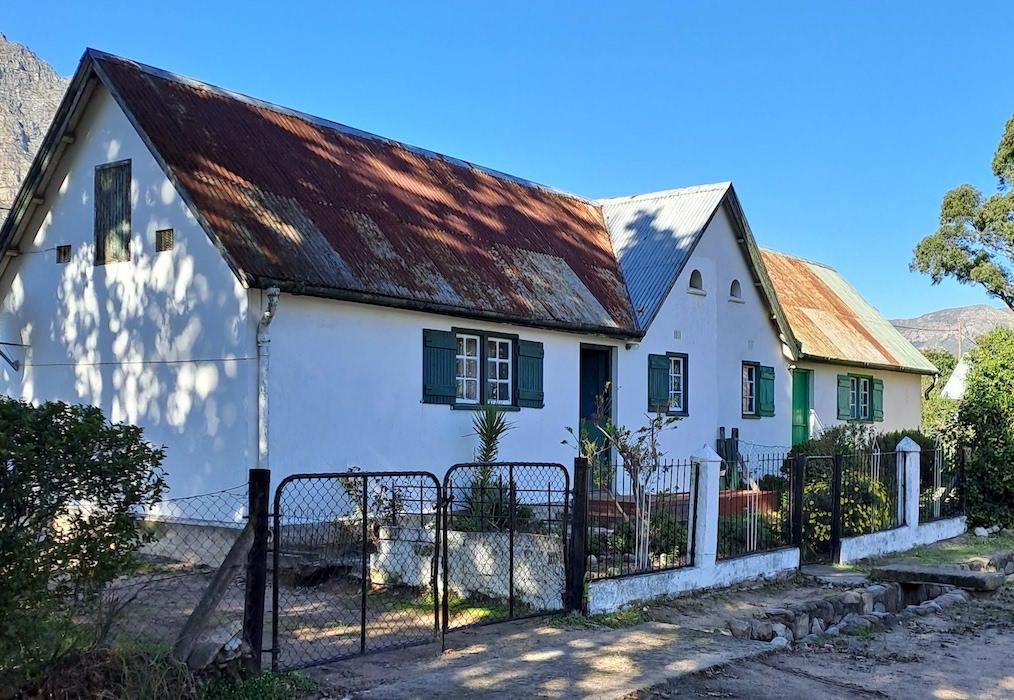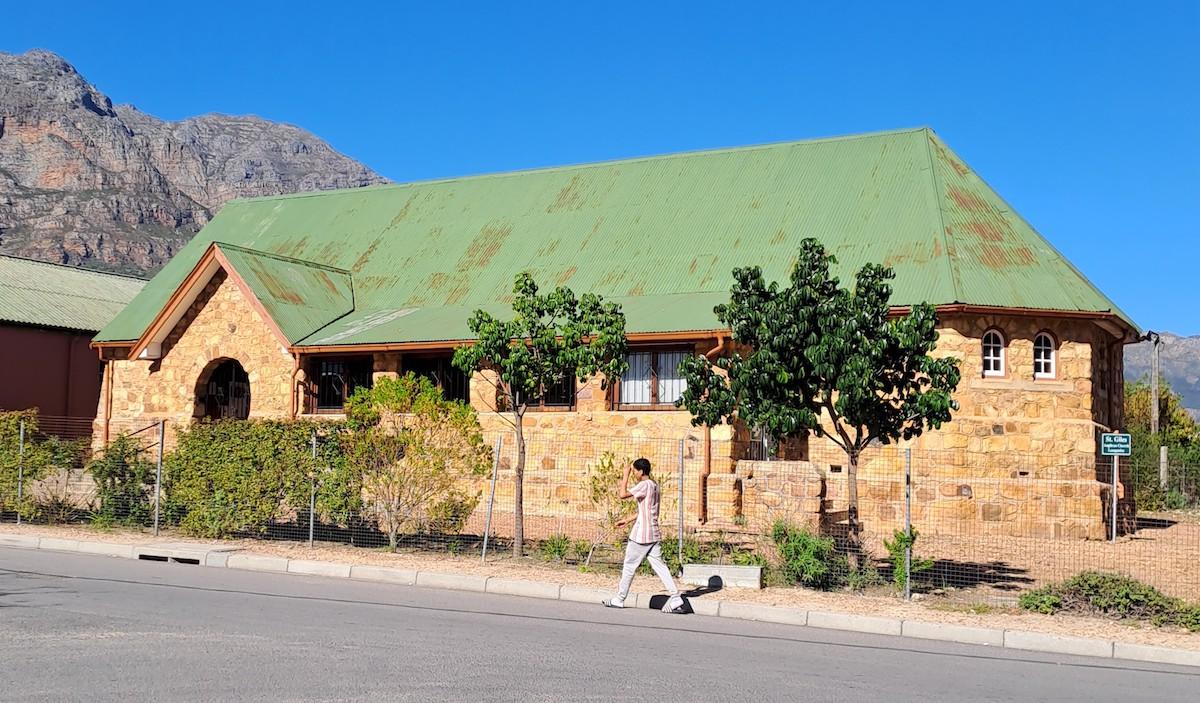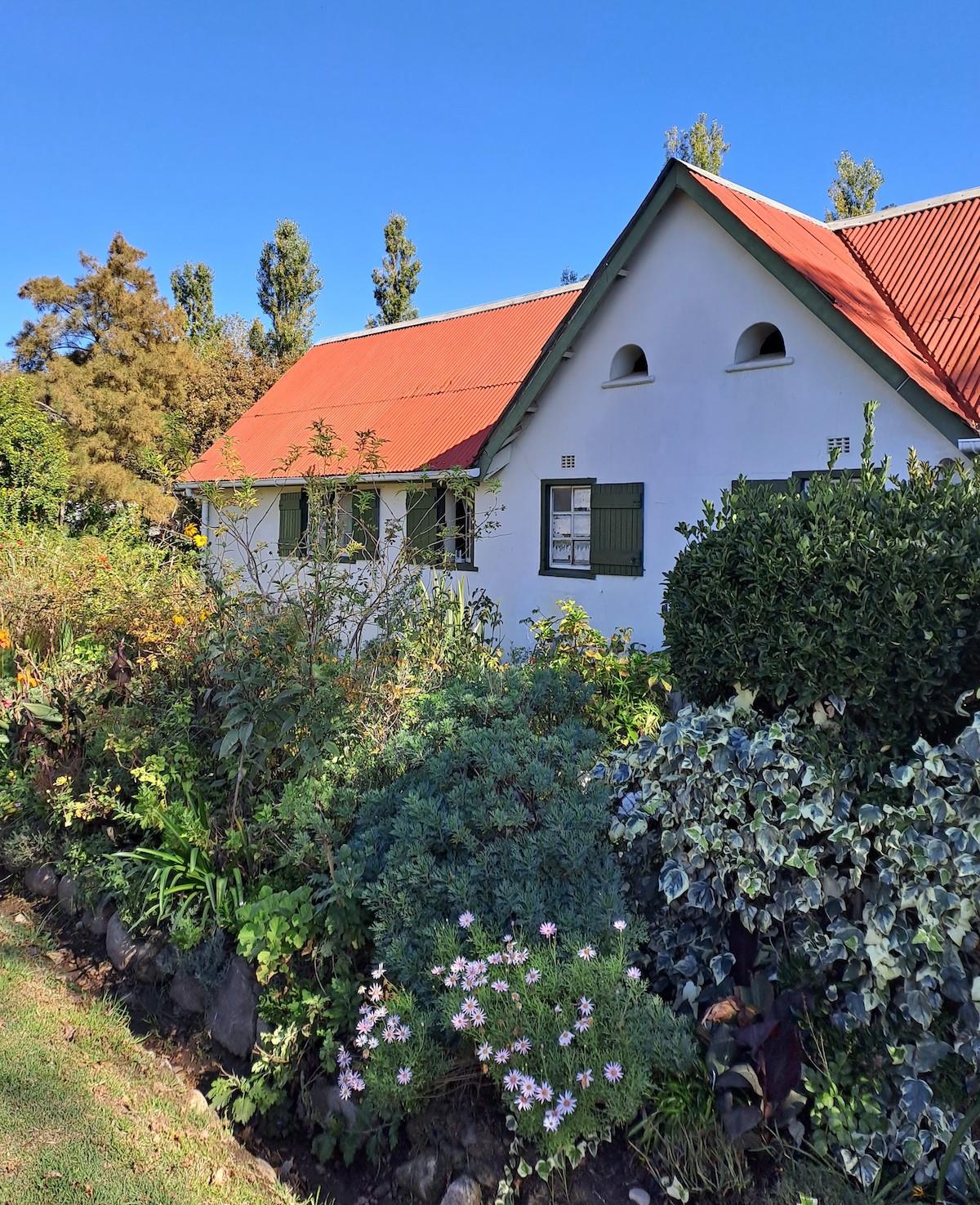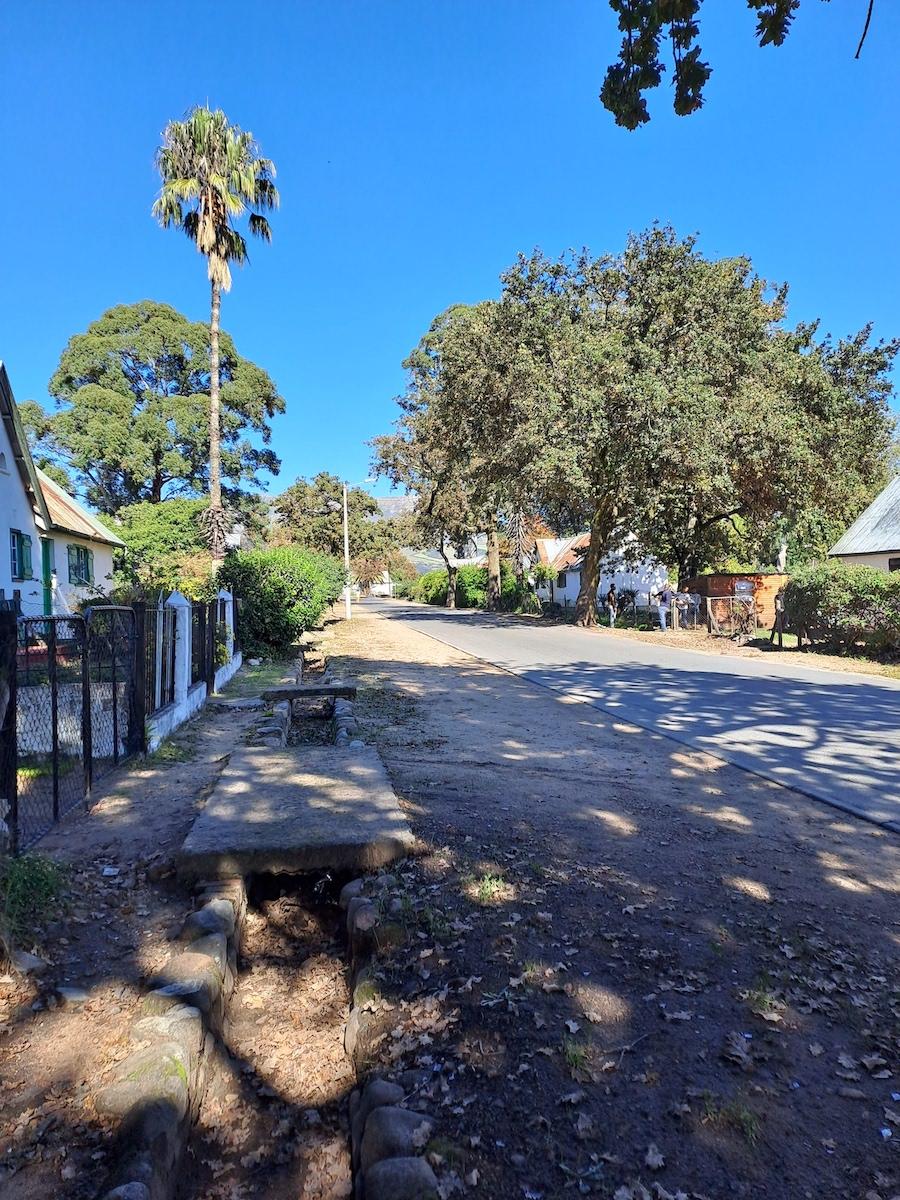
Disclaimer: Any views expressed by individuals and organisations are their own and do not in any way represent the views of The Heritage Portal. If you find any mistakes or historical inaccuracies, please contact the editor.
About a kilometre south of Boschendal, between the estate and Pniel, lies the village of Languedoc. This little-known place was built and paid for by Cecil Rhodes in 1901 as accommodation for his Boschendal farm workers.
The name Languedoc dates to 1694, when a Huguenot named Jean Imbert from Nîmes in France was granted title to a farm by the Dutch East India Company. Nîmes was then situated in the French province of Languedoc, a historical name which has since fallen away.
What follows is largely quoted from Robert Rotberg’s epic ‘The Founder’, a biography of Cecil Rhodes, together with personal observations and conversations with residents.
Rhodes had attempted to solve the question of obtaining adequate labour, primarily Coloured, to work his farms. Characteristically he had decided to build 140 cottages (designed by Herbert Baker) of a model style for the time, create a school and a church. Rhodes would once again be a laird, if largely by proxy. “The cottages are essential” he told Alfred Beit, “so as to enable us to keep good men for the fruit culture.” But the new village of Languedoc cost £25,000 and annoyed the Afrikaner Bond; the coloured men were now all qualified voters, and, Rhodes wrote with some glee, ”their votes would probably change the result of the Paarl constituency at the next General Election.” The village, modernized again only in the 1980’s, was in fact an example of Rhodes’ paternalism. Rhodes did away with the general practice of giving wine in part-payment of wages (the dop system) and imposed strict rules, one of which was a ban on alcohol in the village. The punishment for possession of alcohol was expulsion.
Like other creative persons, Rhodes’ impulse was to create a world according to his own vision of how things should be. That urge led him in some cases to offend ethical norms. In others, it led him to create works of lasting value. In the case of the village, besides creating a local setting for his workers, construction spawned another important local industry. Good clays were found on Rhodes’ farms in the Stellenbosch district, and the bricks and tiles for the workers’ cottages were all made there.
The village can be found between Pniel and Boschendal, down a narrow road to the right as you drive away from Pniel on the R310. It is signposted. Today some houses are a bit run down but the village is a lovely community. Everyone knows everyone else, children play in the leiwater canals. Wandering down the road taking photos I met Mr Leibrandt, a lifetime resident, watering his enviable garden. He knows the Languedoc story and he shared it with me. Boschendal is not one farm as I thought, it is the centre of 20-odd farms employing a sizeable workforce. That would explain the size of the village, at 140 houses together with a school and a church, required by Cecil Rhodes for the moral good of his workers. Church attendance was compulsory, and the preacher, who doubled as the teacher, ensured attendance by wielding a sjambok on late-comers. In the evenings he would prowl the village on the lookout for poor behavior. The church is built of sandstone, and is every inch a typical Herbert Baker design. It could have been lifted directly from St John’s College in Johannesburg, another Herbert Baker project.
Languedoc Church (Chris Taylor)
The houses are all built to the same design and large size (perhaps 120m2) but about half are single dwellings while the rest have two front stable doors and are semi-detached. The single dwellings would have been home to the skilled and senior artisans; the winemaker, perhaps the cooper and the carpenter and the blacksmith. Many of the residents still work for the farming conglomerate, now RFG (previously Rhodes Food Group). It was Boschendal, then owned by Anglo American, which in 1980 refurbished the houses and installed electricity and running water, doing away with the existing long drop toilets. In 1993 the houses were given to the occupants, and new houses were built for other employees. The road beside which the old cottages stand is straight and well-tarred, with an avenue of century-old oak trees and on each side a little water channel, a gracht running with leiwater (channelled water). It is a peaceful place.
Languedoc house (Chris Taylor)
Languedoc Gracht (Chris Taylor)
Languedoc village was conceived and laid out by Cecil Rhodes, designed by Herbert Baker and built by Harry Pickstone and his workers - three important men in the history of the Cape. The village is likely the first decent housing provided by any corporate body in South Africa. Even by modern standards they remain desirable dwellings. They shine a light on another facet of Rhodes’ complex character.
References
- Robert I. Rotberg, ‘The Founder’. Southern Book Publishers, 1988
- Herbert Baker: ‘Cecil Rhodes by his Architect’, Oxford University Press 1934 pp 66-67
Comments will load below. If for any reason none appear click here for some troubleshooting tips. If you would like to post a comment and need instructions click here.



